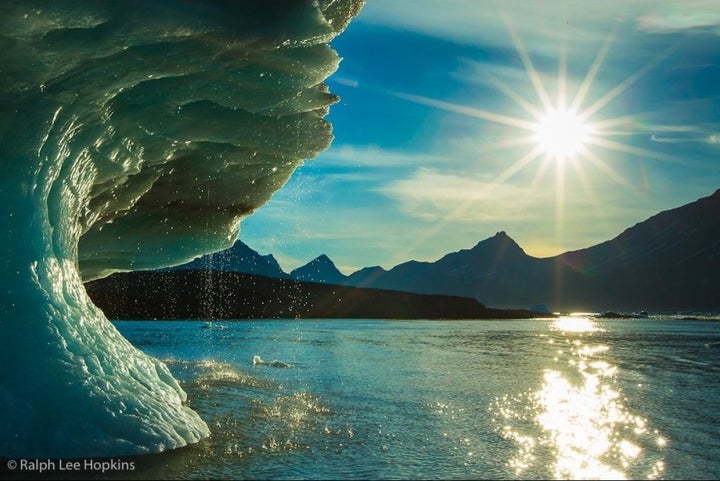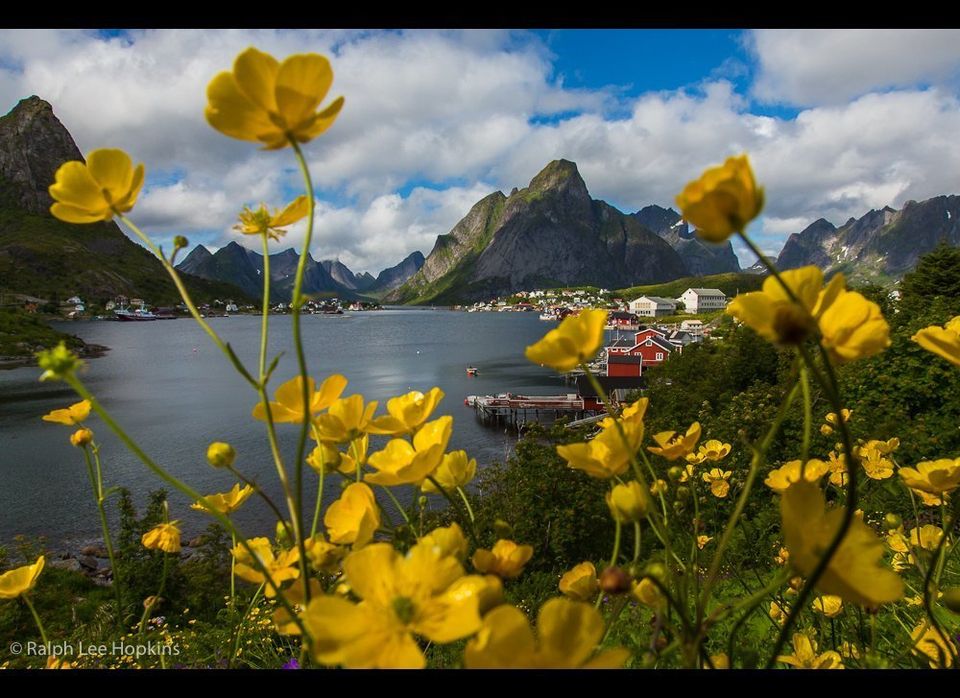
By Ralph Lee Hopkins, Director of Expedition Photography, Lindblad Expeditions-National Geographic
Stepping ashore in eastern Greenland, I realize immediately I'm way overdressed. My expectation this far north of the Arctic Circle was for an ice-cloaked landscape. Instead, it's sunny and 65ºF (18ºC) today, quite amazing for an area that remains frozen for almost nine months with an average temperature of 34ºF (1ºC) this time of year.
At more than 70º north of the Equator, I'm standing at ground zero for climate change. Nowhere else on Earth is it warming as quickly as in Greenland, the world's largest island. Scientists tell us there is melting over 100% of the Greenland Ice Cap this summer, a rare event in recorded history. If Greenland's glaciers totally melt, worldwide sea level is expected to rise over 20 feet. This would flood most of Florida, New York's Manhattan island and other densely populated low-lying areas around the globe. A daunting thought on such a beautiful day.
This epic voyage aboard the expedition ship National Geographic Explorer follows in the wake of the Vikings, who over 1,000 years ago used islands as stepping stones across the North Sea. From the fjords of Norway, we marvel at the jagged peaks and painted houses in sleepy fishing villages in the Lofoten Islands, cruise below towering cliffs filled with northern gannets, encounter stone age ruins and ponies in the Shetlands, comical puffins in the Faroes and waterfalls and more puffins in Iceland. But it was reaching the remote eastern shores of Greenland that was the primary goal for many of us, to see the Greenland Ice Cap and the world's longest system of fjords in Scoresby Sound and King Oscar Fjord.
If there's one animal that brings back visions of the Ice Age, it's the musk ox. Its contemporaries back in the Pleistocene included woolly mammoths, mastodons and saber-tooth tigers, all of which became extinct about 10,000 years ago. Musk ox are funny looking animals, with long shaggy hair obscuring short legs, making them appear as dark boulders at a distance. Up close they have large horns, which the males use during the rutting season. The last remaining indigenous populations of musk ox are here in Northeast Greenland National Park.
But for the geologists on board, the real stars are the rocks displayed along the walls of Greenland's massive fjords. Columnar basalt related to the Devil's Causeway in Ireland, red rocks the same age as rocks in Sedona and Grand Canyon, Arizona; plus fanciful exposures of folded sedimentary and metamorphic rocks. The twists and turns in the rocks look like a giant marble fudge cake stirred by the global forces of plate tectonics during the mountain-building event, when Europe and North America collided over 400 million years ago. Another daunting thought.
We switch focus from Viking history as we cross the Fram Strait to Svalbard, one of the iciest stretches of ocean anywhere. The Fram was the ship Fridtjof Nansen's used in his quest for the North Pole in 1893-96, and Svalbard is the Norwegian word for "cold coast." Our crossing is made even more challenging by thick fog over the past couple of days. Fog is the enemy in the pack ice -- navigation is treacherous and spotting wildlife nearly impossible. It wasn't until the 1600s that Dutch whalers discovered a bounty of whales in Svalbard. They were then followed by sealers, walrus hunters and trappers. Both polar bears and walrus are now protected in Svalbard, unlike Greenland where subsistence hunting is still permitted.
As our reward for braving the elements, the weather clears in Spitsbergen, the largest island in the Svalbard archipelago that stretches to almost 80º north of the Equator, or just over 600 miles from the North Pole. We make a landing after dinner to observe walrus at close range, and on the last afternoon of the voyage we cruise the tidewater glaciers in Hornsund, a spectacular fjord known as a hotspot for the isbørn, or ice bear.
Sharp eyes on the bridge locate a swimming polar bear that hauls itself onto a blue iceberg, while another one swims along the glacier face hunting seals. Jackpot!
Seeing a polar bear in the wild brings our voyage full circle. The rapid melting and thinning of the Arctic pack ice is changing the polar bear's habitat, their dinner table is literally being obliterated by climate change. It's anyone's guess what the ultimate impact will be. Some scientists speculate that the polar bear may disappear by the end of this century. One last daunting thought that I hope never becomes reality.
